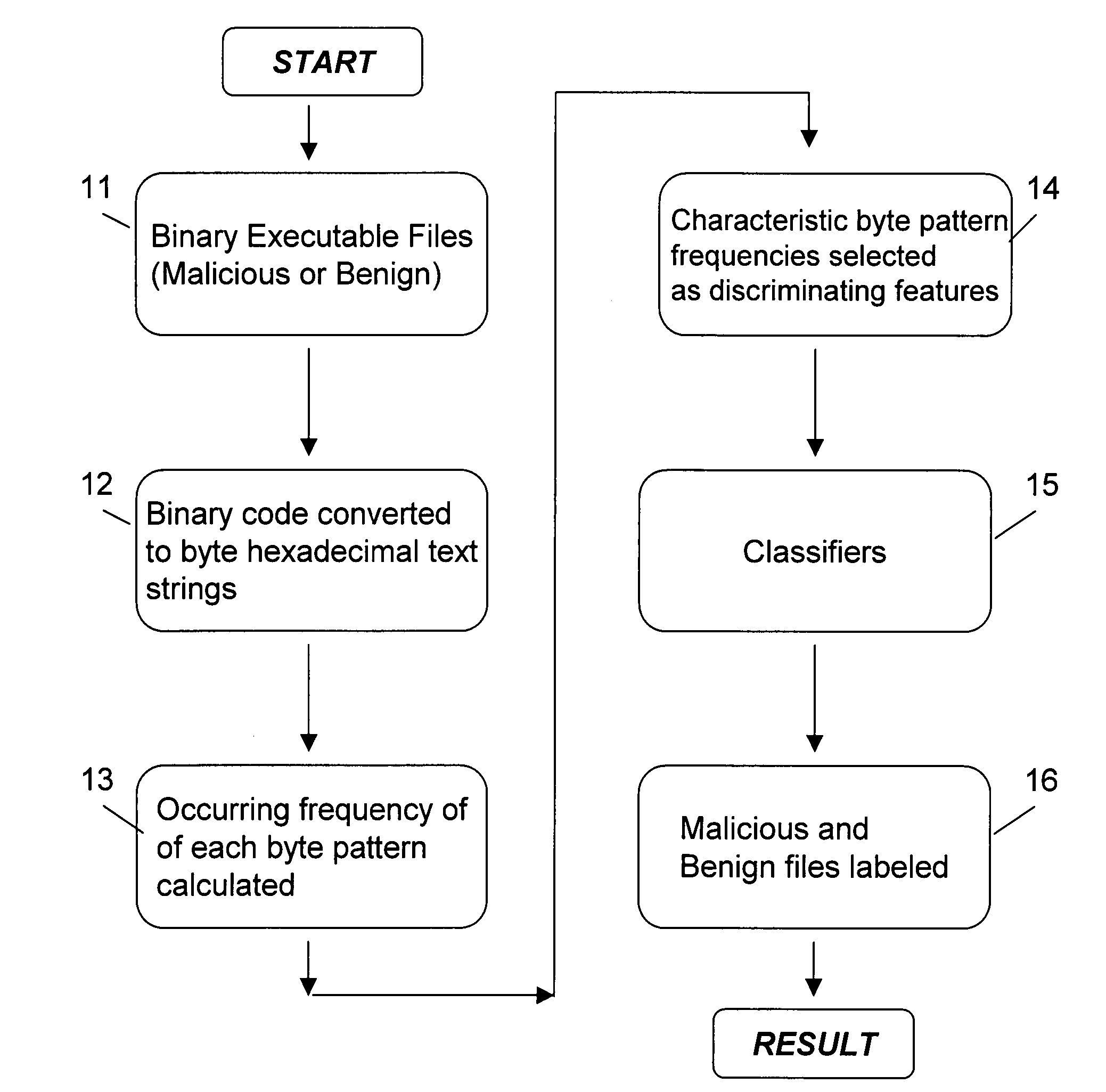Detection of malicious computer executables
a technology of malicious computer executables and executables, which is applied in the direction of error detection/correction, unauthorized memory use protection, instruments, etc., can solve the problems of malicious attack, unauthorized access and malicious attacks, and the growth of malicious virus attacks on connected computers at an alarming ra
- Summary
- Abstract
- Description
- Claims
- Application Information
AI Technical Summary
Benefits of technology
Problems solved by technology
Method used
Image
Examples
Embodiment Construction
[0015]The present invention provides reliable malicious code detection using these byte sequence frequencies. It achieves high accuracy in the detection of known viruses and their unknown variants, and in maintaining a very low false positive rate. The invention may most easily be understood through reference to the figures and the following description.
[0016]Referring first to FIG. 1, where a block diagram of the functioning of the present invention is illustrated. As seen, initially, binary executable file 11 is input. Binary executable file 11 could be, for example, an attachment to an email message, or a download from a website. The binary executable file 11 is then converted to byte hexadecimal text strings 12. A portion of exemplary code could appear as follows:
[0017]
07eb0a5659031a000e0000e8fa00ec8b325889c0024646812800b90005ce2cb046888bff007e4e888afeff4e0d0000eb8a47fe4ec4e288cfa103daf50727629474acd8ebe4f85424ebfac3d89c60ac62
The detection practiced by the present invention is b...
PUM
 Login to View More
Login to View More Abstract
Description
Claims
Application Information
 Login to View More
Login to View More - R&D
- Intellectual Property
- Life Sciences
- Materials
- Tech Scout
- Unparalleled Data Quality
- Higher Quality Content
- 60% Fewer Hallucinations
Browse by: Latest US Patents, China's latest patents, Technical Efficacy Thesaurus, Application Domain, Technology Topic, Popular Technical Reports.
© 2025 PatSnap. All rights reserved.Legal|Privacy policy|Modern Slavery Act Transparency Statement|Sitemap|About US| Contact US: help@patsnap.com



